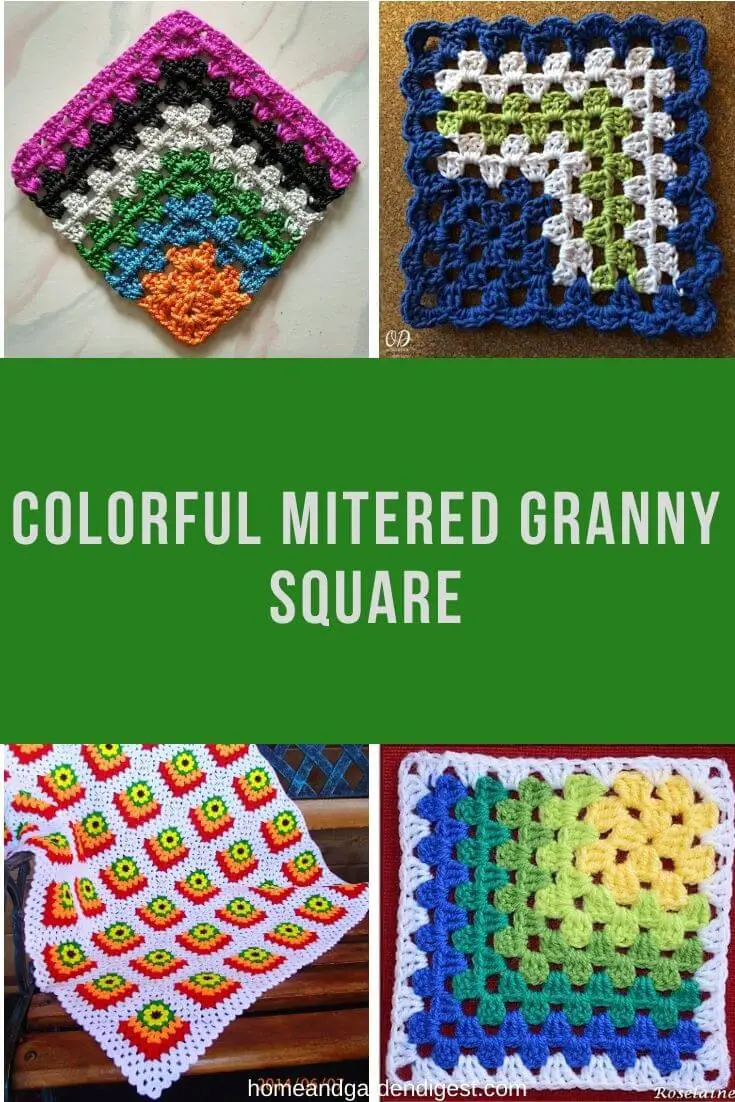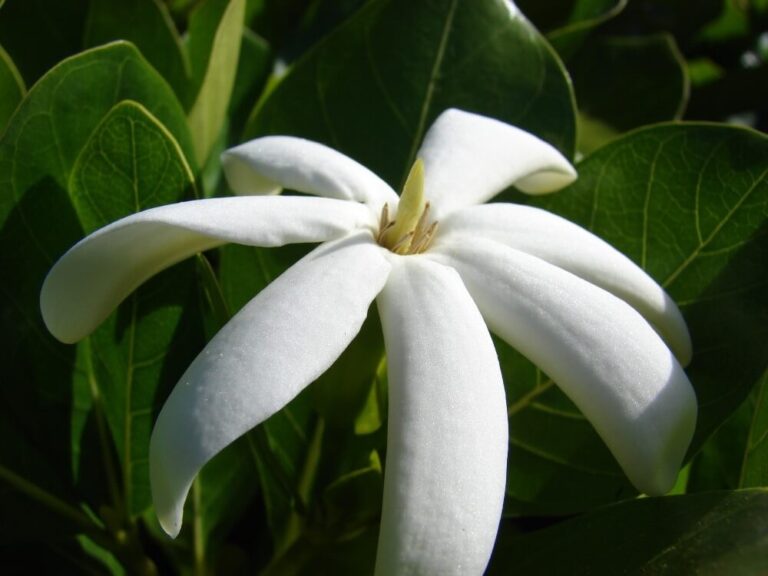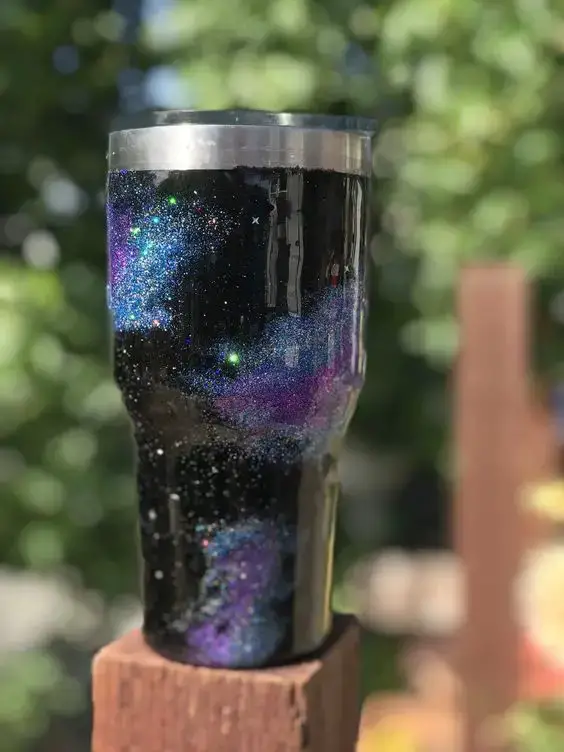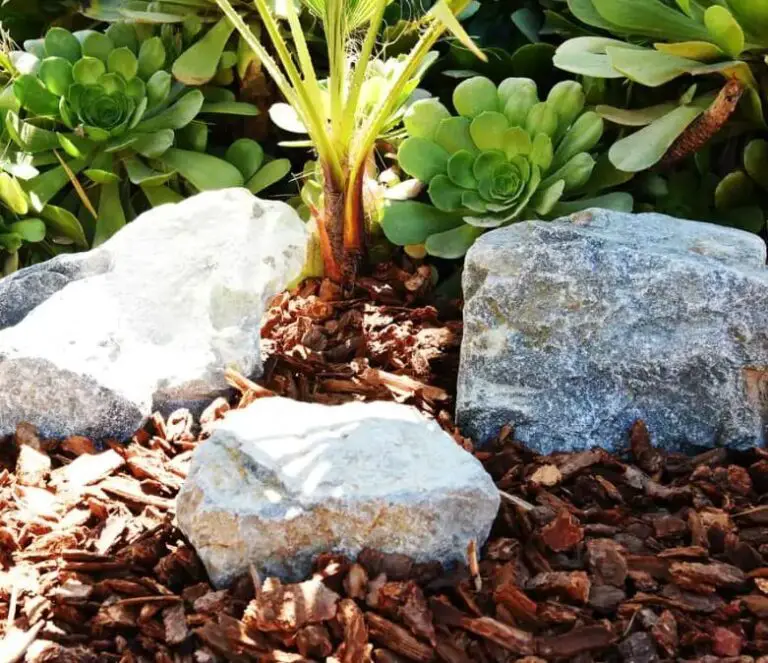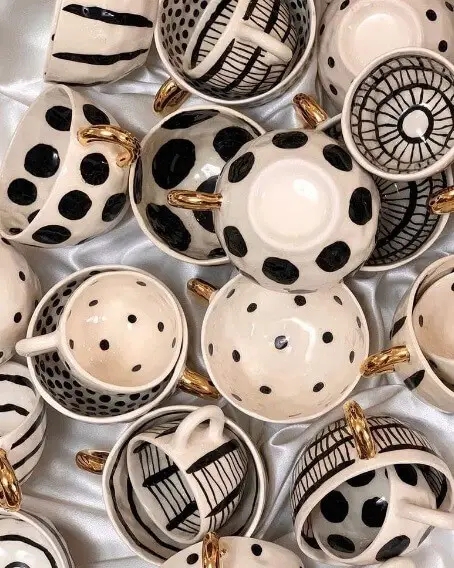15 Plants That Look Like Lavender: Perfect Winter Houseplant
Some people may think they’re getting lavender, but certain plants share a striking resemblance without being part of the Lavandula genus. These dupes often boast purple or bluish foliage, or even produce similar-looking flowers. What’s more, these lookalikes thrive in specific USDA zones, making them ideal for indoor arrangements during fall and other seasons. Beyond those with lavender-like appearance, there are numerous alternatives that can mirror its aesthetic appeal.
Russian Sage
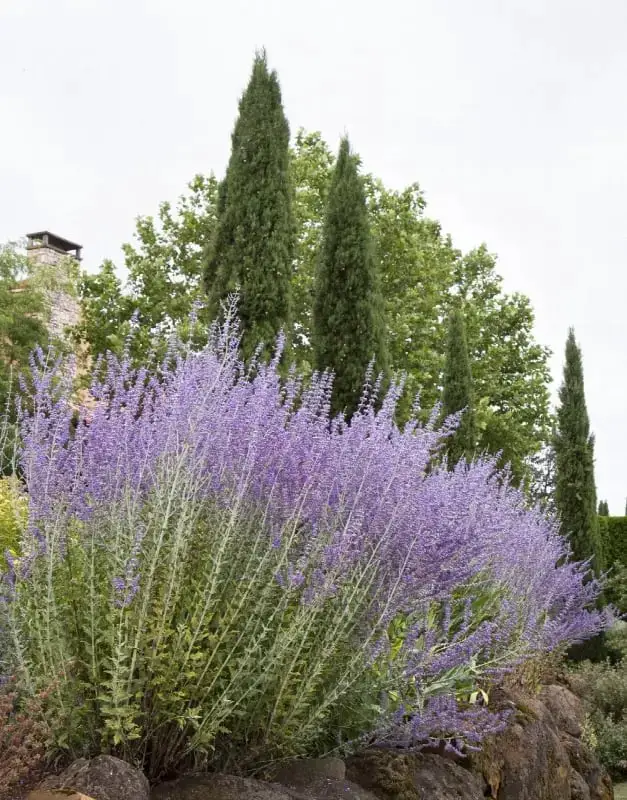
Russian Sage, a shrub-like herb that stands between three to five feet tall, bears a striking resemblance to lavender due to its purple-tinged floral tips. Originating from Afghanistan, this hardy plant thrives in USDA zones 7-9 and can withstand varying weather conditions. Its natural aroma, reminiscent of lavender, serves as a deterrent for pests and insects, making it an effective lining for your garden beds. This perennial plant produces a pleasant scent that also helps to ward off unwanted visitors, allowing you to create a protective barrier around your other plants. As the seasons change, Russian Sage blooms in the spring and gradually withers away during the winter months to escape harsh frost conditions, making it a lovely alternative to traditional lavender.
Hyssops
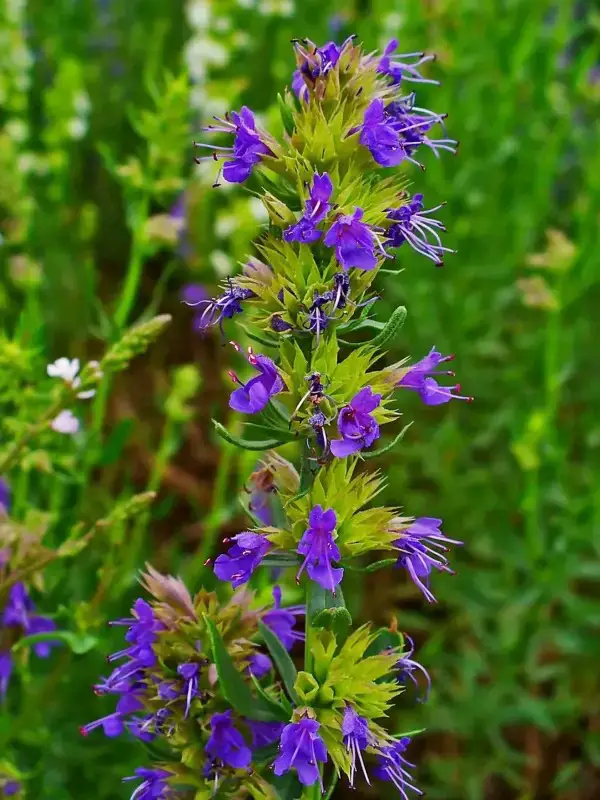
Hyssopus officinalis, a perennial bush native to Southern Europe and the Middle East, is renowned for its impressive medicinal properties. This 1.5-foot-tall shrub boasts purple flowers and green leaves that grow in clusters, reminiscent of Russian Sage. Under ideal conditions, hyssops can reach up to 8 feet in height. To thrive, they require well-drained soil with a pH range of 6.6 to 8.5. Despite being relatively drought-resistant, the plants will still benefit from occasional watering. Hyssop’s medicinal uses include cough relief, antiseptic properties, and expectorant applications. To maintain the plant’s growth, pruning in the spring is recommended.
Catmint
Nepeta faassenii, also known as catmint, is a herbaceous plant with green leaves and striking purple floral structures reminiscent of some Hyssops species. This plant originates from Northern Europe, New Zealand, and North America, standing out from its lavender-like counterparts by growing taller – up to 10 feet under ideal conditions. Its dense, bushy foliage thrives in dry environments and showcases impressive weather resistance, making it a suitable choice for USDA zones 3 to 8. While catmint’s wild growth patterns require regular pruning and maintenance, the plant’s lovely fragrance serves as a natural deterrent against pests and insects, allowing it to be used in herbal remedies like soups.
Rosemary
Rosemary, scientifically known as Salvia rosmarinus, is a shrub that originates from South Europe, Asia Minor, and North Africa. Its foliage features thin, needle-like leaves with a distinctive pointed tip, while its blooms take the form of small purple flowers. One of the most popular alternatives to lavender, Rosemary is renowned for its hardiness, thriving in dry conditions and USDA zones 7-9. This adaptability enables it to withstand hot weather without compromising its growth. Notably, its needle-like leaves serve as a clever mechanism to conserve water by minimizing evapotranspiration. As the plant can grow quite tall, regular pruning is necessary to maintain its shape. Its versatility has led to its adoption in the culinary industry, where it’s used for various purposes.
Purple Salvias

With over hundreds of species and subspecies, purple salvias are a common sight in the western United States, particularly in Utah, where they thrive naturally. Characterized by their striking purple stems and flowers, these herbaceous plants boast low-lying green leaves that provide a lush backdrop for their vibrant blooms. While some may view their sturdy nature as intimidating, purple salvias can actually withstand harsh hot climates, making them well-suited to USDA zones 7 through 9, with some species even tolerating the extreme conditions of zone 11. To flourish, however, these plants require dry soils, which means they’ll do best in areas with low rainfall. In terms of care, purple salvias are relatively low-maintenance, requiring only the occasional pruning to keep them looking their best – simply clip any brown stems that appear before spring arrives and you’re good to go. When grown en masse, these beautiful plants can create a stunning display, and by allowing their stems to dry out slightly between waterings, you’ll be helping to promote healthy growth.
Basil
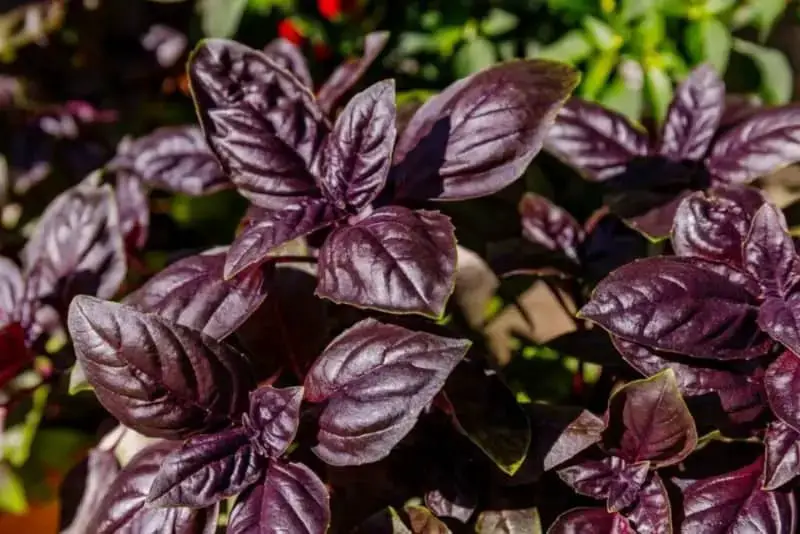
Basil, a perennial herb native to the tropics of Africa, America, and Asia, stands out for its striking resemblance to lavender among all other plants. The subspecies featuring deep purple leaves originate from Africa and Asia, where they’re often used as a condiment in the catering industry. Notably, this hardy plant thrives in a wide range of conditions, making it a low-maintenance addition to any garden. To thrive, basil requires sufficient sunlight and can tolerate temperatures above USDA zone 9, making it fairly heat-resistant. A simple pruning technique can optimize growth height by cutting off the flower heads, while regular clipping of leaves every six weeks ensures a steady supply for cooking purposes.
Mealey Cup Sage
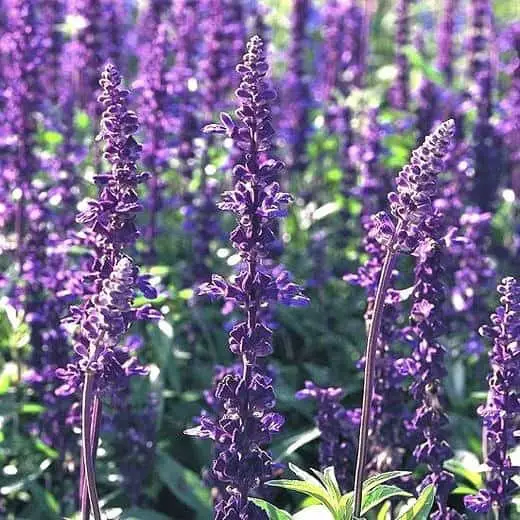
In the western United States and Utah, you can find the thrifty Mealey Cup Sage growing in clusters, reaching heights of 1 to 3 feet tall. This herbaceous plant is characterized by its thin purple stem, adorned with vibrant purple flowers, and a foundation of green leaves at its base.
A hardy and adaptable species, Mealey Cups are well-suited for USDA zones 8 to 10, where they can tolerate the harshest of climates. To flourish, these plants require well-draining soils to prevent waterlogged conditions that could lead to osmotic disequilibrium. They also need plenty of sunlight to thrive.
One of the notable advantages of Mealey Cup Sage is its remarkable resistance to pests and diseases. This makes it an excellent choice for creating a perimeter around your garden, providing natural protection from unwanted visitors.
Mexican Bush Sage
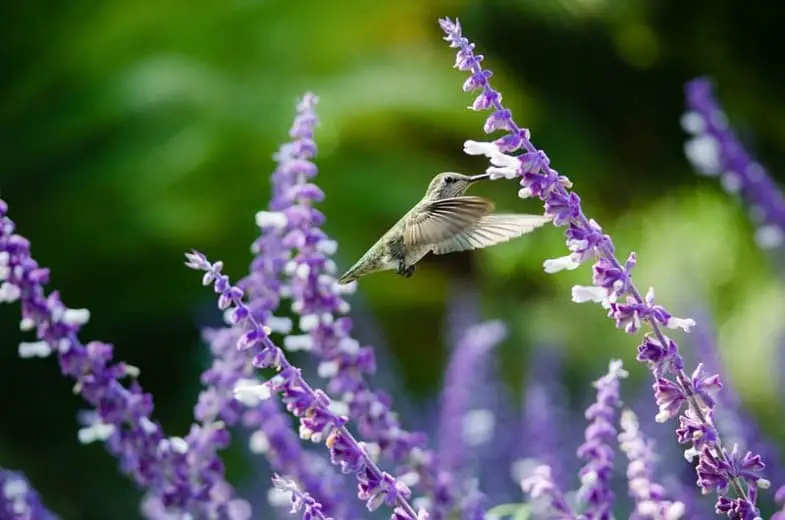
Mexican Bush Sage (Salvia Leucantha) is a native species to Central and Eastern Mexico, where it thrives as a hardy herbaceous plant. Standing at approximately 4 feet tall, this Salvian boasts purple stems and flowers, with green leaves that grow low to the ground. Its adaptability to extreme heat makes it an ideal choice for USDA Zones 8b to 11. While dry soil is its preferred growing condition, Mexican Bush Sage can survive occasional periods of moisture. One of its most attractive features is its ability to form clusters when grown together, showcasing vibrant purple hues. When left to dry naturally after flowering, the plant encourages healthy growth and attracts pollinators like bees and hummingbirds.
Wisteria
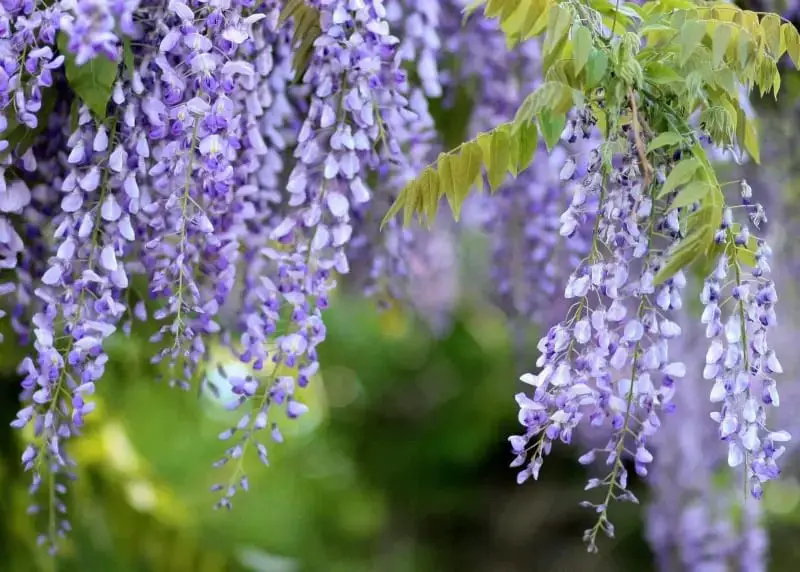
Wisteria Sinensis, a stunning climber from China, boasts lush green foliage and vibrant purple blooms. This hardy plant, ranging in size from 10 to 25 feet, is known for its woody stem, which grants it some degree of heat tolerance.
As Wisteria tends to sprawl, it often attaches itself to taller trees or structures, seeking out maximum sunlight exposure. Its adaptability allows it to thrive in zones USDA 5 to 9, characterized by dry conditions.
Interestingly, this plant is surprisingly resilient when it comes to soil type, flourishing in both acidic and alkaline environments.
However, it’s essential to note that Wisteria’s beauty belies its toxicity to pets and farm animals. Ingestion should be strictly avoided. Additionally, the plant exhibits a natural resistance to pests and diseases. To encourage optimal growth and maximize its potential height, regular pruning is recommended.
Catnip
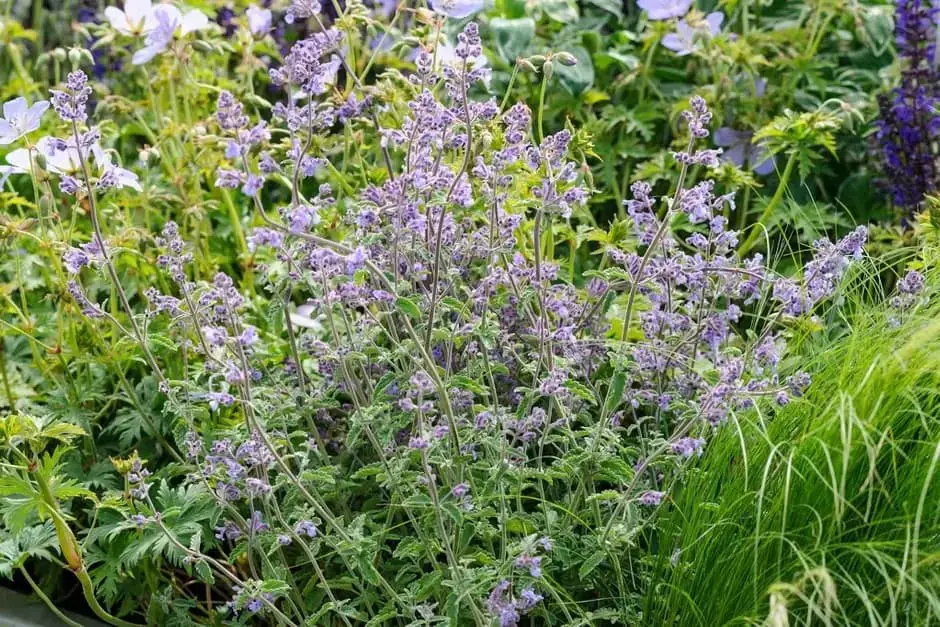
Nepeta cataria, also known as catnip, is a herbaceous plant that originates from southern and eastern Europe, the Middle East, and Central Asia. Its unique feature is its bright purple patterns towards the leaf margins, which are accompanied by green leaves. The plants typically grow in bushes or shrub-like structures, reaching heights of 20 to 40 inches depending on soil conditions and subspecies. They thrive in various environments, with some species requiring USDA 3 to 9 zones for optimal growth, while others can tolerate hotter climates without special soil requirements. One notable aspect of catnip is its calming effect on cats and other animals, making it a popular choice among pet owners.
Caradonna Salvia
Native to Europe and west-central Asia, Cardona Salvia is an eight-to-ten-inch perennial herb that thrives in USDA zones 4 to 8. This herbaceous plant grows in clusters, boasting purple flowers on thin stems surrounded by green leaves at its base. As with many sage species, Cardona Salvia has adapted to withstand harsh climates, tolerating conditions that would be challenging for other plants. Its ability to flourish in such environments is likely due to its evolutionary response to the demands of its native habitats. When it comes to growing conditions, Cardona Salvia requires well-draining soils to prevent osmotic disequilibrium and a significant amount of sunlight to reach its full potential. Fortunately, this hardy plant has no known pests or diseases affecting its health. Its natural defenses make it an effective addition to your garden, serving as a natural barrier against pests and vermin. In fact, planting Cardona Salvia around the perimeter of your garden can provide an added layer of protection for your other plants.
Allium ssp

Allium Vinale ssp, a herbaceous species originating from France and Italy, boasts impressive characteristics. Its tall green stems support bulbous structures housing vibrant purple, pink, green, or yellow floral clusters that are unique to this species. Unlike many others, Allium Vinale ssp does not exhibit shrub-like growth. Instead, it thrives in a variety of environments due to its exceptional weather resistance.One of the most striking features of this plant is its lilac appearance, courtesy of its purple-tinged floral tips. When mature, the plant emits a pleasant aroma that serves as a natural pest repellent and insect deterrent. This fragrance also helps create a protective barrier around other plants in your garden. As the seasons change, Allium Vinale ssp blooms quickly, partially withering during winter to avoid frost damage. Its hardiness and adaptability make it an excellent addition to any garden.
Petunia
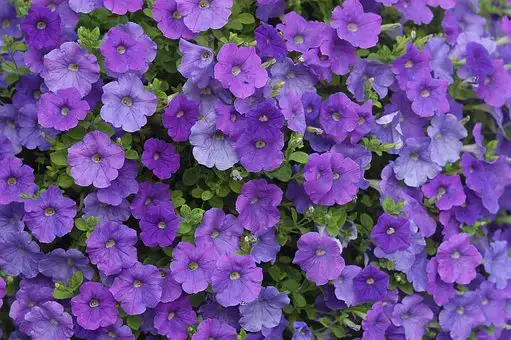
Petunia X Hybrida, a species native to South America, boasts an impressive array of characteristics. Its vibrant trumpet-shaped flowers come in a range of colors, including yellow, red, white, and orange, making it a stunning addition to any garden or arrangement. While the plant itself typically reaches only six to eight inches in height, ideal conditions can coax it to grow up to 10 feet tall. A dense, bushy habit is another defining feature of Petunia, which thrives in dry environments and showcases impressive weather resistance. In fact, this hardy species excels in USDA zones 10 and 11, making it an excellent choice for those living in areas with mild winters. One of the most striking aspects of Petunia, however, is its use in hanging baskets, where its flowers can be fully appreciated. A low-maintenance option for those who live in areas without heavy rainfall, Petunia unfortunately does not fare well outside tropical conditions.
Larkspur
Larkspur, a stunning seasonal flower, boasts a slender green stem adorned with flowers radiating outward in a vibrant display. Native to the Mediterranean region, this hardy perennial thrives in zones 2 to 10, adapting remarkably to environments ranging from heavy rainfall to arid conditions. Its soil tolerance is equally impressive, flourishing in both acidic and alkaline pH levels.
One of Larkspur’s most notable characteristics is its ability to self-seed, effortlessly regenerating year after year without the need for constant replanting. While its beauty can be a delight, it’s essential to note that the flowers are toxic to pets and may not be suitable for all homes.
On the plus side, Larkspur’s natural toxins serve as a deterrent for unwanted pests and vermin, protecting your home without requiring special care or pruning. This low-maintenance plant is content with its own company, thriving independently without demanding excessive attention.
Conclusion
Lavender is renowned for its striking deep purple hue, which effortlessly elevates the ambiance of any setting. However, did you know that these plants are geographically limited to specific USDA zones? Fortunately, nature has provided alternative options that share a similar aesthetic appeal or can harmoniously coexist with lavender. These versatile plants thrive in diverse climates, offering a range of possibilities to suit your needs.

